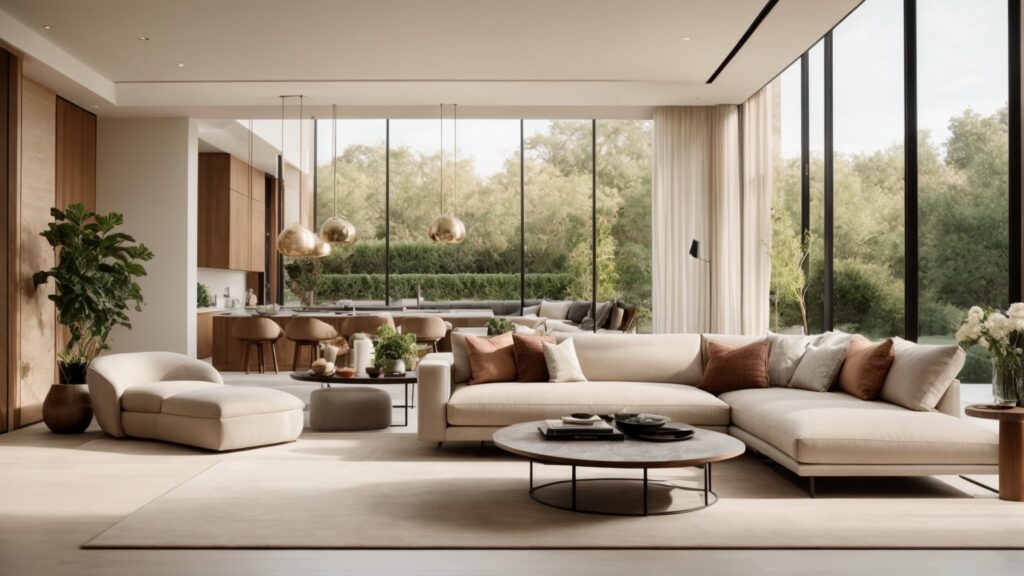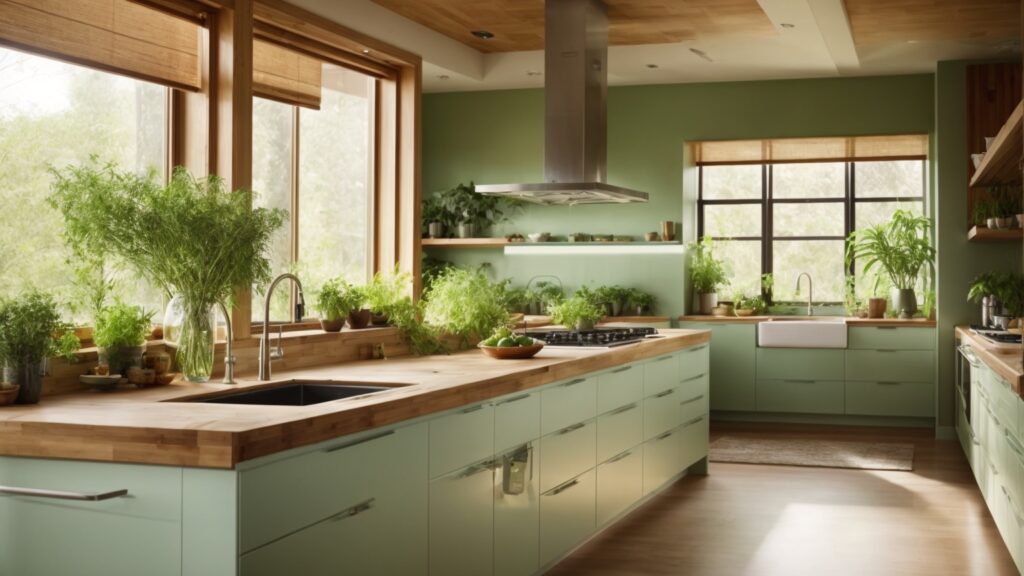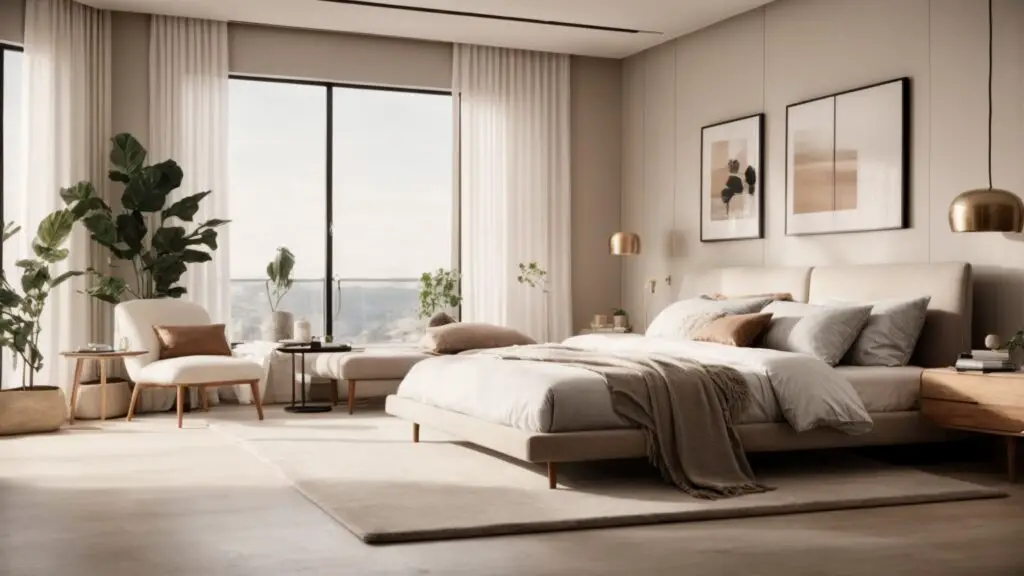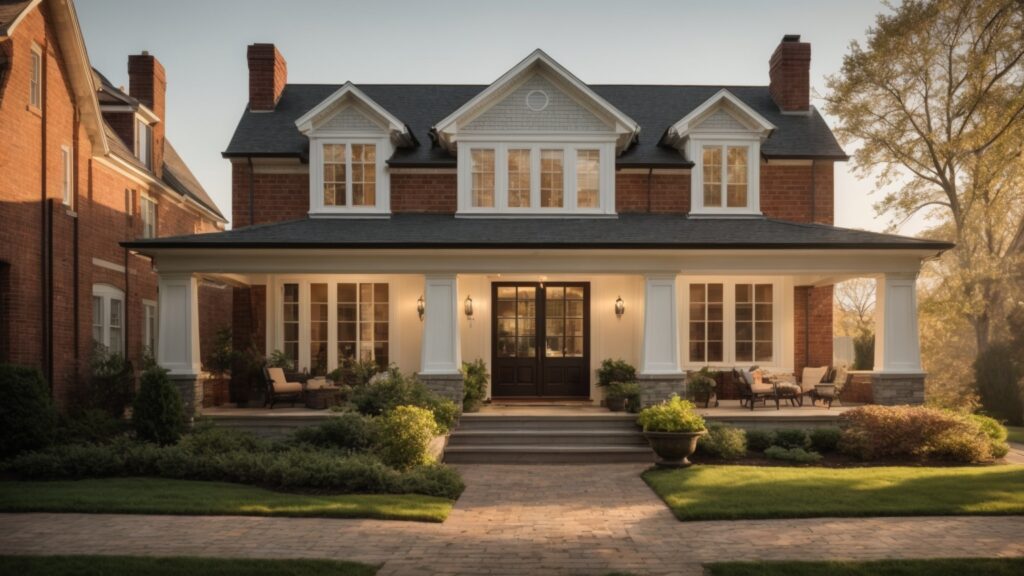Estimated reading time: 15 minutes
Introduction
The concept of modern home remodeling has evolved significantly in recent years, reflecting changes in tastes and styles and a deeper understanding of functionality and sustainability. This evolution is driven by technological advancements, environmental consciousness, and a shift towards more adaptive living spaces. As homeowners seek to transform their living areas into personalized sanctuaries, the importance of a remodel transcends mere aesthetic upgrades. It’s about creating spaces that resonate with the inhabitants’ lifestyles, values, and future aspirations.
A modern home remodel is not just a process of change; it’s a journey toward realizing a dream home. Whether a sleek, minimalist design for a city apartment or a comprehensive makeover of a historic home, each project reflects a unique narrative. The trends in this domain have seen a shift from conventional designs to more dynamic and fluid concepts. These include open floor plans promoting social interaction, integrating smart home technologies for enhanced convenience, and using sustainable materials that speak to environmental responsibility. The modern homeowner is not just looking to renovate; they seek to reconfigure their living spaces to align with modern design principles, such as maximizing natural light, optimizing functionality, and ensuring that each room seamlessly blends with the rest of the house.
This comprehensive guide delves deep into modern home remodeling, exploring the latest trends, practical tips, and innovative ideas. From transforming small spaces into efficient areas to integrating eco-friendly practices, we cover a spectrum of topics catering to various remodeling needs and desires. Our goal is to provide valuable insights and inspiration, guiding you through the exciting process of transforming your space into a modern, functional, and aesthetically pleasing home.
Key Takeaways
- Essential Planning: Effective planning is crucial for a successful modern home remodel, ensuring both functionality and aesthetics.
- Space Optimization: Innovative design techniques are key to maximizing space, especially in small homes, blending creativity with practicality.
- Sustainability Focus: Adopting eco-friendly and sustainable practices in remodeling enhances living spaces and contributes to environmental responsibility.
- Interior Design Evolution: Staying abreast of the latest interior design trends is essential for a modern and stylish home remodel.
- Older Home Challenges: Renovating older homes requires a delicate balance between preserving historical character and introducing modern upgrades.
- Budgeting and Costs: Understanding the financial aspects of remodeling helps make informed decisions and avoid unnecessary expenses.
- DIY vs. Professional Help: Knowing when to DIY and when to seek professional help can make a significant difference in the outcome of the remodel.
- Permits and Regulations: Navigating regulatory requirements is critical to ensure the remodel complies with local laws and standards.
- Technology Integration: Incorporating smart home technology enhances the functionality and convenience of modern living spaces.
- Material Selection: Choosing the right materials is crucial for the remodel’s durability and aesthetic appeal.
The Essential Guide to Modern Home Remodeling
Understanding the basics of modern home remodeling.
The journey of modern home remodeling encompasses more than just aesthetic updates; it’s a comprehensive re-envisioning of living spaces to reflect contemporary styles, functionality, and individuality. This transformation can range from revamping a single bedroom to a full-scale house remodel, each step tailored to enhance your home’s utility and appeal. Whether installing sleek cabinetry in a new kitchen or crafting an open-concept living area, the essence of modern remodeling lies in creating spaces that resonate with today’s lifestyle while catering to personal preferences and needs.
“It’s about envisioning the final outcome, whether it’s for a kitchen remodel or an entire home renovation. Consider how each change fits into the bigger picture of your home’s design and functionality. And always keep a close eye on your budget – it’s the compass that guides the entire project.”
Latest Trends in Home Design and Aesthetics
Clean lines, open spaces, and seamless integration of indoor and outdoor environments characterize today’s modern home remodeling trends. Platforms like Pinterest are rich with modern home remodel ideas, showcasing contemporary house designs that embrace modernism, mid-century touches, and innovative landscape designs. The trend is toward creating spaces that are visually appealing, highly functional, and sustainable, reflecting the evolving lifestyle needs of homeowners.
Case Study: Consider transforming a craftsman’s home into a modern villa. The remodel involved adding a two-story extension, creating an open-concept floor plan, and incorporating modern touches like skylights and airy living spaces. The kitchen had contemporary countertops and cabinetry, while the master bathroom featured stylish Carrara finishes. This case study exemplifies how blending modern elements with a home’s original character can create a unique and inviting living space.
Cost-Effective Remodeling Strategies
Adopting cost-effective strategies in home remodeling doesn’t mean compromising style or quality. It involves making strategic choices like prioritizing key areas, such as the kitchen and bathroom, where renovations can significantly increase the home’s value. Opting for long-lasting materials and considering DIY solutions for certain aspects of the remodel can also help in managing the budget effectively while achieving the desired modern look.
Navigating Regulatory Requirements and Permissions
One of the most critical aspects of a modern home remodel is understanding and complying with local regulatory requirements. “Before embarking on a major renovation, such as adding a second story or changing the front of the house, it’s essential to consult with local authorities to ensure compliance with building codes and obtain necessary permits,” advises a seasoned architect. This step not only ensures the safety and legality of the remodel but also safeguards the investment made in the property.
A successful modern home remodel requires a blend of visionary planning, keeping abreast of the latest design trends, implementing cost-effective strategies, and adhering to regulatory standards. Whether the project involves a simple room refresh or an extensive whole-house renovation, approaching each aspect with careful consideration and informed decision-making will lead to a harmonious blend of modern aesthetics and practical functionality, ultimately transforming your house into a contemporary and comfortable home.

Maximizing Space in Small Homes
Innovative ways to utilize space in small homes.
One of the most challenging yet rewarding tasks in modern home remodels is maximizing space in small homes. Transforming limited square footage into a functional and aesthetically pleasing area requires creativity, strategy, and an understanding of space dynamics. It’s about making every inch count, whether dealing with a compact bedroom, a narrow dining area, or a tiny home office. The goal is to create a space that feels open, airy, and inviting without compromising comfort or style.
I once faced the challenge of transforming a small, cramped bedroom into a multi-functional space. The room was also a home office and needed to accommodate storage without feeling cluttered. By thinking outside the box, I integrated multi-purpose furniture and utilized vertical space, completely changing the room’s dynamics. This experience taught me that even the smallest spaces can be turned into something extraordinary with the right approach.
Creative Storage Solutions
One of the key aspects of maximizing space is finding creative storage solutions. This involves looking beyond conventional cabinets and drawers and exploring innovative options like wall-mounted shelves, under-bed storage, and built-in units. For instance, a fireplace mantel can double as a display shelf, or a staircase can incorporate drawers on each step. These solutions save space and add a unique touch to the home’s interior design.
Table: Comparison of Space-Saving Furniture and Fixtures.
| Furniture/Fixtures | Functionality | Space Saving Feature |
|---|---|---|
| Murphy Bed | Sleeping | Wall-mounted, foldable |
| Convertible Sofa | Seating/Sleeping | Multi-functional |
| Nested Tables | Surface Area | Compact storage |
| Corner Shelves | Storage | Utilize corner space |
| Hanging Racks | Storage | Vertical space usage |
Design Techniques for Small Spaces
Effective design techniques are crucial in small-space remodeling. This includes choosing a lighter color palette to make rooms appear larger, using mirrors to create an illusion of depth, and selecting furniture proportional to the room’s size. It’s important to maintain a balance between functionality and aesthetics. For example, a sleek, built-in desk for a home office or a drop-leaf table in a small dining area can be stylish and practical.
A noted interior designer once said, “Designing for small spaces is an art. It’s about maximizing functionality while maintaining an aesthetic flow. Every furniture choice, color selection, and design element must serve a purpose and enhance the space.” This perspective underscores the importance of thoughtful design in small home renovations.
Maximizing space in small homes is about strategic planning, innovative storage solutions, and smart design choices. It requires a thoughtful approach to every element, from furniture selection to color schemes. These principles allow even the smallest of homes to be transformed into comfortable, stylish, and highly functional living spaces.
Eco-Friendly and Sustainable Remodeling Practices
The importance of sustainability in home remodeling.
In the current era of environmental awareness, the significance of eco-friendly and sustainable practices in ome remodeling cannot be overstated. More homeowners are recognizing the impact of their choices on the environment and are seeking ways to minimize their carbon footprint. Sustainable home renovations go beyond just adding a modern touch to a space; they involve incorporating materials and designs that respect and preserve our natural resources. This approach benefits the planet and enhances the health and comfort of the home’s inhabitants, making it a crucial consideration in any remodeling project.
Case Study: Consider the transformation of a midcentury home into an eco-friendly haven. The project focused on maintaining the midcentury gems while incorporating sustainable elements. Solar panels were installed for energy efficiency, and rainwater harvesting systems were integrated for water conservation. Recycled timber was used for flooring and decking, reducing the home’s environmental impact. This case study demonstrates how a remodel can maintain a home’s character while adapting to eco-friendly standards.
Choosing Sustainable Materials
Selecting sustainable materials is a cornerstone of eco-friendly remodeling. Homeowners increasingly opt for materials like bamboo flooring, recycled glass countertops, and reclaimed wood for furniture and paneling. These materials reduce the demand for virgin resources and add a unique aesthetic to the home. Additionally, using non-toxic, low-VOC paints and adhesives improves indoor air quality, making the home safer and more comfortable.
List: Top eco-friendly materials and products.
- Bamboo – for durable, fast-growing flooring.
- Recycled Glass – for stylish, sustainable countertops.
- Reclaimed Wood – for rustic furniture and accents.
- Low-VOC Paints – for healthier indoor air quality.
- Cork – for resilient, renewable flooring options.
- Solar Panels – for renewable energy generation.
- LED Lighting – for energy-efficient illumination.
- Rainwater Harvesting Systems – for sustainable water use.
- Green Roofing – for improved insulation and air quality.
- Energy-Efficient Appliances – for reduced energy consumption.
Energy-Efficient Home Improvements
Energy efficiency is a critical aspect of sustainable home remodeling. This includes the installation of solar panels, upgrading to energy-efficient appliances, and incorporating LED lighting throughout the home. Insulating walls and roofs, upgrading to double or triple-glazed small windows, and sealing air leaks are also effective ways to reduce energy consumption. These improvements make the home more environmentally friendly and significantly lower utility bills.
Water Conservation Techniques in Home Design
Water conservation is another key element of eco-friendly home design. This can be achieved through installing low-flow fixtures in bathrooms and kitchens, implementing greywater systems, and using drought-resistant plants in landscaping. Integrating rainwater harvesting systems for garden irrigation or toilet flushing can greatly reduce a home’s water footprint.
Incorporating eco-friendly and sustainable practices in home remodeling is about making conscientious choices that benefit both the environment and the homeowners. From choosing sustainable materials to implementing energy-efficient improvements and water conservation techniques, every aspect of the remodel significantly reduces environmental impact. By adopting these practices, homeowners can create a living space that is modern and beautiful but also responsible and sustainable.

Interior Design Trends in Modern Homes
Overview of current interior design trends.
Modern homes’ interior design landscape constantly evolves, reflecting broader cultural shifts, technological advancements, and individualistic expressions. Today’s trends are a tapestry of functionality, aesthetics, and sustainability, with homeowners looking to renovate their spaces to reflect contemporary tastes. These trends are not just about beauty but about creating a living space that resonates with the homeowner’s lifestyle and aspirations. From the family room to the bedroom, every home area sees innovative design transformations.
List: Popular Interior Design Styles.
- Minimalist Design: Emphasizes clean lines, uncluttered spaces, and a monochromatic color palette.
- Industrial Chic: Combines raw materials like metal and exposed brick with a modern twist.
- Scandinavian Simplicity: Focuses on functionality, natural light, and simple yet cozy furnishings.
- Bohemian Eclectic: Mixes various textures, patterns, and vibrant colors for a relaxed, worldly vibe.
- Modern Farmhouse: Blends rustic charm with contemporary design elements.
- Sustainable and Eco-friendly: Uses environmentally responsible materials and energy-efficient designs.
- Tech-Integrated Smart Homes: Incorporates smart devices for enhanced comfort and convenience.
Incorporating Technology in Home Design
In modern home remodel, integrating technology is becoming increasingly prevalent. Smart homes, where technology enhances every room’s functionality, are no longer a futuristic concept. From automated lighting systems in the bedroom to voice-controlled appliances in the kitchen, technology is making homes more efficient and life more convenient. These technological integrations can be as subtle as USB ports in electrical outlets or as comprehensive as home automation systems controlling security, lighting, and temperature.
Color Palettes and Textures Trends
The modern home’s color palette and texture choice significantly impact its aesthetic. Current trends are shifting towards earthy, soothing tones in living spaces, with accents of bold colors for character. Textures play an equally important role, with natural materials like wood and stone being popular for their tactile and visual warmth. Matte finishes are gaining popularity in bathrooms and kitchens for their sleek, contemporary look.
A leading interior designer remarked, “Today’s interior design is all about creating a personalized space that tells a story. It’s about blending styles, textures, and colors in a way that reflects the homeowner’s personality while maintaining a cohesive and functional environment.”
Modern home interior design trends reflect today’s diverse lifestyle needs and personal preferences. Whether it’s the minimalist elegance, the warmth of the modern farmhouse style, or the cutting-edge smart home technology, these trends are about creating spaces that are not only visually appealing but also highly functional and representative of the homeowner’s identity. With these insights, homeowners can embark on a remodeling project that transforms their living spaces into a true reflection of their personal style and modern living demands.

Renovation Ideas for Older Homes
Challenges and opportunities in renovating older homes.
Renovating older homes presents a unique set of challenges and opportunities. Unlike modern houses, older structures often have a rich history and architectural character that many homeowners wish to preserve. However, bringing these homes into the 21st century requires careful consideration to maintain their charm while updating them to meet current standards of comfort and efficiency. This delicate balance between preserving the past and embracing the present offers an exciting journey for any modern home remodel.
Preserving Historical Character While Updating
One of the primary goals in renovating older homes is to preserve their historical character. This can involve restoring original features like wood floors, intricate moldings, or unique siding. It’s about respecting the home’s architectural integrity while making necessary updates. Careful selection of materials and design options is key to ensuring that any additions or renovations do not clash with the original style but rather complement it, allowing the home’s history to continue to shine through.
I once had the privilege of renovating a century-old craftsman home. The project was a delicate dance of modernizing the space while preserving its rich heritage. We updated the kitchen and bathrooms, integrated modern insulation techniques, and added new, energy-efficient windows that matched the style of the originals. The result was a home that retained its historic charm while offering the comfort and efficiency of a modern dwelling.
Modern Upgrades for Older Structures
Modernizing older homes often involves introducing contemporary elements that enhance livability without overshadowing the home’s original character. Upgrades like adding a modern kitchen, updating bathrooms, or installing smart home technology can significantly increase the home’s functionality. These changes can be done in a way that respects the home’s history, such as choosing cabinetry and fixtures that reflect the period’s style or using colors and materials that harmonize with the existing palette.
List: Key considerations for older home renovation.
- Structural Integrity: Assessing the foundation and framework for necessary repairs.
- Electrical and Plumbing Upgrades: Modernizing systems for safety and efficiency.
- Insulation and Energy Efficiency: Improving comfort and reducing utility costs.
- Period-Appropriate Materials: Choosing fixtures and finishes that reflect the home’s era.
- Blending Old and New: Incorporating modern amenities without detracting from historical charm.
Table: Before-and-After Comparisons of Renovated Spaces.
| Space | Before | After |
|---|---|---|
| Kitchen | Dated fixtures, closed layout | Modern appliances, open-concept |
| Bathroom | Old plumbing, vintage tiles | Updated plumbing, period-style tiles |
| Living Room | Dark wood paneling | Brightened walls, restored woodwork |
| Exterior | Worn siding, outdated windows | Repaired siding, energy-efficient windows |
Dealing with Common Old Home Issues
Common issues in older homes include outdated electrical systems, insufficient insulation, and, often, the need for structural repairs. Addressing these issues is crucial for safety and comfort. For instance, rewiring the electrical system or adding modern insulation can have a big impact on the home’s livability and energy efficiency.
An architectural expert specializing in historic homes once said, “Renovating an older home is not just about making it look new again; it’s about honoring its story while ensuring it continues to be livable and loved for many more years.”
Renovating older homes is a rewarding process that requires a thoughtful approach to preserve their historical essence while making them suitable for modern living. By carefully blending old and new elements, addressing key structural and functional issues, and respecting the home’s original character, homeowners can successfully bring these timeless structures into the modern age.

Conclusion
As we conclude this exploration into modern home remodel, it’s clear that this journey transcends mere aesthetic changes. It’s about reconfiguring living spaces to align with current lifestyles and personal tastes, ensuring that every room, from the bedroom to the family room, reflects the homeowner’s unique narrative. Whether embracing the sleek, minimalistic trends in interior design, integrating smart home technology, or adopting eco-friendly practices, each remodel aspect plays a crucial role in crafting a space that is not just a house but a dream home.
For those embarking on their home renovation adventure, remember that it’s a journey of transformation, where challenges turn into opportunities to create something truly special. It’s about going beyond the standard makeover to make a big impact on your living space and quality of life. Whether you’re looking to update a quaint craftsman home with modern touches or completely transform a split-level home into an open, airy space, each decision you make should be geared towards creating a home that is not only in line with modern design principles but also a reflection of your style and needs.
From updating the kitchen and bathrooms to rethinking the entire floor plan, your remodel can bring new life to every corner of your home. So, whether you’re drawing inspiration from Pinterest, browsing through home remodeling ideas, or consulting with architects and designers, leap and start shaping the home of your dreams. With careful planning, creativity, and a clear vision, your home remodel can be an exciting, rewarding journey that turns your current residence into your ideal living space, where new memories will be cherished for years.

James Dunnington leads the James Dunnington Collection, featuring five unique blogs: a practical Pet Care Guide, an enlightening Ancient History Blog, a resourceful Home Improvement Guide, a cutting-edge Tech Innovation Guide, and a strategic Online Money Making platform. Each site delivers valuable insights designed to empower and inform. For updates and more tips, visit our Contact Us page to sign up for our newsletter, ensuring you never miss out on the latest content from any of these dynamic fields.
